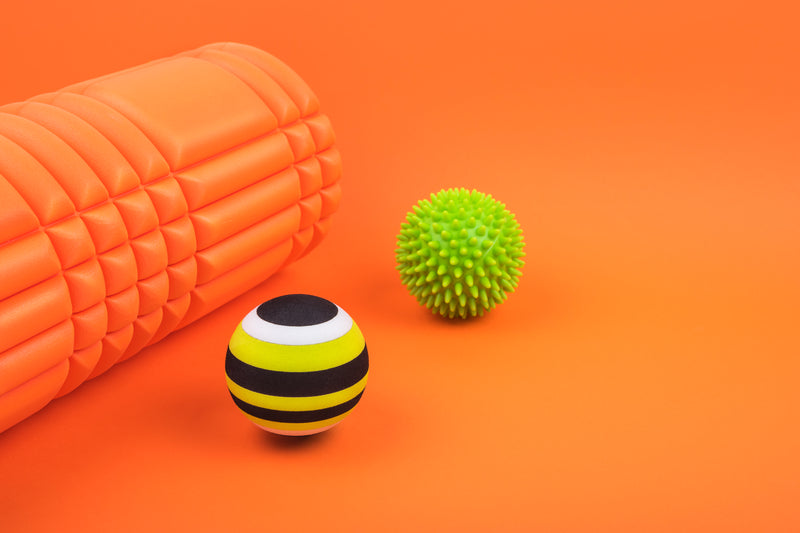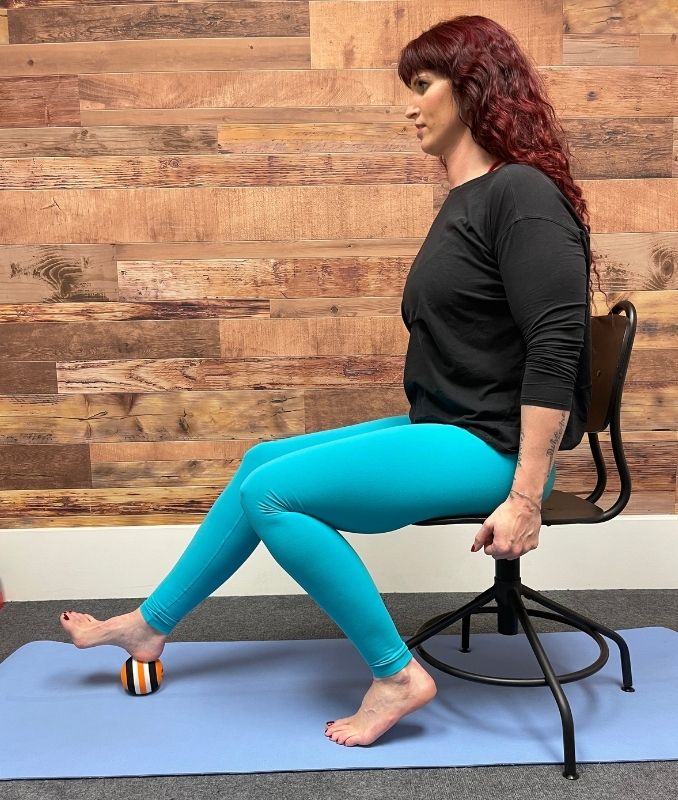
How to Recover Your Muscles with a Foam Roller and Tennis Ball
Did you know that foam rolling and tennis ball techniques can help recover muscles faster? These tools are commonly used for physical therapy, but you can use them at home to speed up your recovery as well. It’s not just about the soreness after a workout; it’s also about how quickly you can recover from it. If you’re spending hours in the gym each day, working on your fitness – not just sore muscles – is crucial to staying healthy. Let’s look at how to recover your muscles with a foam roller and tennis ball so you can train harder sooner!
The benefits of using a foam roller or a tennis ball are numerous. Both tools help relieve tension in your specific muscle groups and loosen up tight areas that could be hindering your progress. Using one or both of these tools post-workout will reduce soreness and speed up your recovery time so you can get back to training sooner.
Importance Muscle Recovery
Simply put, recovery is the process that your body undergoes after a workout. It takes time for your muscles to repair and recover after a hard workout, and it’s important that you give your body enough time to do so. There are many ways to speed up one’s recovery process, and certain methods can help with specific types of injuries. For example, ice is often used to reduce inflammation, whereas compression garments are often used to help with swelling and blood flow.
Recovery is important for many reasons. If you are trying to increase your fitness level, you’re likely going to have to push yourself pretty hard during your workout. This means that your body will break down muscle fibers, which leads to muscle soreness. In order to prevent this, you need to make sure that you are recovering properly after your workout. You can do this by eating a healthy diet, drinking plenty of water, getting plenty of sleep, and using recovery methods like foam rolling and tennis ball.
Foam rolling: Helping you recover your sore muscles
Foam rolling is an excellent tool to use post-workout to help ease inflammation and promote blood flow to the muscles. What you want to do is use the roller to roll back and forth over the targeted muscle groups. You want to roll until you feel a mild amount of discomfort and then stop. Foam rolling works to break up adhesions in the muscle, which cause pain and soreness. It also increases blood flow to the targeted areas, allowing your muscles to receive more oxygen and nutrients. Allowing your muscles to fully heal can help you prevent future injuries and soreness. Foam rolling can also help ease muscle tightness. Tight muscles can lead to poor posture, discomfort, and the risk of injury.
What is Foam Rolling?
Foam rolling is a self-myofascial release (SMR) technique that can help relieve muscle tightness, soreness, and inflammation while increasing your joint range of motion. Foam rolling can be an effective tool to add to your warm-up or cool down to alleviate tightness or trigger points and help in muscle recovery. For smaller, more targeted areas, a tennis ball is a great tool for working any tight muscle knots.
The foam roller is one of the most essential recovery tools in your fight recovery arsenal. It is a cylindrical piece of foam that you roll your body over to alleviate muscle aches and pains. It works by increasing blood flow to the muscles by breaking up knots and adhesions that can form after workouts, races, or intense training sessions. These knots are called Trigger Points, and they are very painful. They also cause other muscles to compensate for the pain, which can lead to injury. Foam rolling also increases mobility in the joints. This is great for fighters who want to keep their flexibility in the joints high so that they can keep on fighting.
Foam rolling can be done before or after a workout. Pre-workout foam rolling is called Self-Myofascial Release (SMR). Post-workout foam rolling is called Self-Myofascial Release Therapy (SMRT). Pre-workout SMR is great for loosening up the muscles and getting them ready for the workout ahead. Post-workout SMRT is great for bringing blood flow to the muscles and helping them recover after a hard workout.
Below we have shared some of our favorite muscle recovery exercises for you to try.
How to Recover Your Muscles Using Tennis Ball
Using a tennis ball is another great way to use tennis balls are great for targeting specific areas. It’s good to have a tennis ball that doesn’t have the little fuzz on it so that you can really dig in and get right into those muscles that need some extra love and attention. Breathe deeply as you roll out each muscle group. It helps to ground you and focus your attention on your muscles, rather than your thoughts. This is a great way for you to really get focused on recovery, especially after a hard training session or fight. Make sure you’re rolling out every muscle group. This includes your calves, thighs, glutes, lower back, shoulders, and upper back. Roll out each muscle group for two to three minutes. It’s also important to stretch out after you’ve rolled out your muscles with the tennis ball.
1. Rolling Out Feet
It's best to perform this exercise without shoes on. You can use either a golf ball or a tennis ball. Begin in an upright sitting position on a chair with your knees bent and your feet on the ground, maintaining good posture with your head, shoulders, and hips. Step on the ball with one foot and slowly roll from your heel to your toes and back again. Roll through each metatarsal, applying as much bodyweight to the ball as you can tolerate. It should feel slightly unpleasant. Keep going back and forth, pushing on any tight spots as you go. Repeat the movement on the other side.
 |
 |
2. Ankle Rotations
Begin in an upright sitting position on the chair with your knees bent and feet flat on the floor, maintaining good alignment with your head, shoulders, and hips. Engage your core, lift one leg, and rotate your foot in circular motions. Lower your leg to the starting position and repeat the movement
on the opposite side.
 |
 |
 |
How to Recover Your Muscles Using Foam Roller
We’ve already talked about how important it is to foam roll before you stretch, but it’s also important to do it after a workout. Before you go to sleep at night, you can also get in a really good roll by rolling out your hamstrings, quads, calves, and your IT band. It’s important to roll out your upper body, too, but be careful not to roll out your arms too much. You want to roll out your back, your chest, your sides, and your shoulders. When you’re foam rolling, you want to focus on your pain points. You want to focus on the most painful areas. You don’t want to roll out areas that aren’t painful. It won’t do you any good. You’re not going to get any benefit out of it.
3. Calf Roll
Sit upright on the floor with your legs straight and your hands at your sides for support. Position the foam roller under your mid-calf area. Engage your core and straighten both arms to lift your seat off the floor. Move your body to roll the foam roller from just below your knees to your ankles and back. Repeat the movement.
 |
 |
3b. Calf Roll Progression
Position the foam roller under your mid-calf area to sit up straight on the floor. Lift your seat off the ground by engaging your core and extending both arms. Cross one ankle over the other, pressing more weight onto one calf, to roll the foam roller from just below your knee to your ankle and back. Roll the foam roller across your ankle and back repeatedly. After several repetitions, repeat the movement on the opposite side.
 |
 |
4. Rolling IT Bands
Rolling your IT bands can be fairly intense, so be sure not to press too much of your body weight into your roller at first. Begin in an upright sitting position on top of the foam roller. Move onto your side so that the roller is positioned under one hip and support your upper body on your forearm. Engage your core and straighten your bottom leg. Bend your top knee and plant your foot on the floor for support, either in front or behind your straight leg. Slowly roll from your hip, down to just above your knee and back. Repeat the movement. After several repetitions, repeat the movement on the opposite side.
 |
 |
5. Chest Opener
It's best to use a long foam roller for this exercise. If you don't have one, use a pillow or bolster to support your head. Sit on the ground with your legs bent and your feet flat, then position the foam roller underneath your body, parallel to your spine. Lie on your back on the roller with your arms stretched out at your sides with palms facing upward. Slowly sweep your arms up from the floor as you engage your core. Repeat the movement lowering your arms to the starting position. Begin with 1 set of 10 repetitions.

It's imperative for anybody who exercises regularly or is recovering from muscle or joint injuries to own a foam roller. You can purchase a roller from any sporting goods store or online. After you finish some simple foam rolling routines, your body will feel amazing. Don't be reluctant to add these maneuvers to your daily routine.
Other Muscles Recovery Tools and Techniques
There are other ways to recover your muscles and expedite your fight recovery time. Here are a few more things you can do to speed up your recovery.
- Eat right: Eating right is one of the most important things you can do after a workout. Your post-workout meal should have enough protein and carbohydrates to replenish your body and build your muscle tissue.
- Move your body: Doing gentle stretching after a workout helps bring blood flow to the muscles and expedites your recovery time.
- Sleep: Sleeping is one of the best things you can do after a workout. Sleep is when your body heals, so make sure you are getting enough!
- Stay hydrated: Staying hydrated after a workout is key to your body’s healing process. Make sure to drink plenty of water to keep your muscles hydrated and healthy.
- Reduce stress: Stress can hinder your fight recovery. Make sure you are taking the time to de-stress after a workout. You can do this by meditating, journaling, or going for a walk in nature.
Final Words
With all the benefits that come from foam rolling and tennis ball, you have no excuse not to do it. Foam rolling your muscles can help relieve pain and soreness, improve your mobility, and even aid in injury prevention. Stretching can also help improve your posture, increase blood flow, and improve your joint range of motion. The best way to recover your muscles is to foam roll and stretch. It’s also important to eat a balanced diet, get enough sleep, and stay hydrated. All of these things can help you recover faster and feel better faster.

